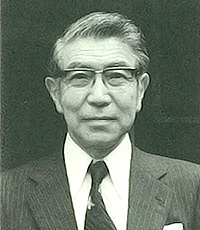Japanese Pioneers
Michio Hatoyama

Michio Hatoyama was born in 1909. After graduating from the physics department in the Faculty of Science at Tokyo Imperial University in 1933, he became a research student and later a research assistant at Rikagaku Kenkyusho (RIKEN). Entering the Navy Technology Institute later in the same year, he began research into improving radio-wave weapons. He joined the Electrotechnical Laboratory of the Ministry of Communications and Transportation in 1945 and became the manager of the physics department in 1952. He was invited to take up the directorship at Sony Corporation’s Research Center in 1960. In the same year he also earned a doctorate in engineering. He became an executive managing director of Sony Corporation in 1965 and the president of Shohoku College in 1974. He retired from Sony in 1981.
His major books include The Story of Atoms in 1939, Semiconductors in 1951, Transistors and their Materials in 1936, and People Who Supported Semiconductors in 1980.
Before the Second World War, Hatoyama was involved in research into atomic nuclei and had no involvement with the physics of semiconductor materials. Since the navy was abolished after the war, he entered the Electrotechnical Laboratory where he became engaged in research into semiconductors on the advice of Yasushi Watanabe, a professor at Tohoku University and manager in the laboratory. At the news of the invention of the transistor, a transistor research team was organized with Hatoyama as the leader. In contrast to Takeo Seki’s team, which was aggressive enough to take only two years to reproduce transistor operation and build a working alloy transistor, Hatoyama’s team put their efforts into gathering information on transistors and, with the aim of securing sources of germanium, discussing ways to evaluate materials from makers in Japan and overseas for this role. Although the team was too busy with these tasks to produce a working transistor in its first three years, their work led to exchanges of personnel both domestically and internationally, and so was very helpful in establishing a broad basis for transistor research in Japan. Yasuo Tarui, under Hatoyama’s tutelage, was very successful in exercising strong leadership in later years as the director of the cooperative laboratory of the VLSI Technology Research Association, which required cooperation between the member companies.


